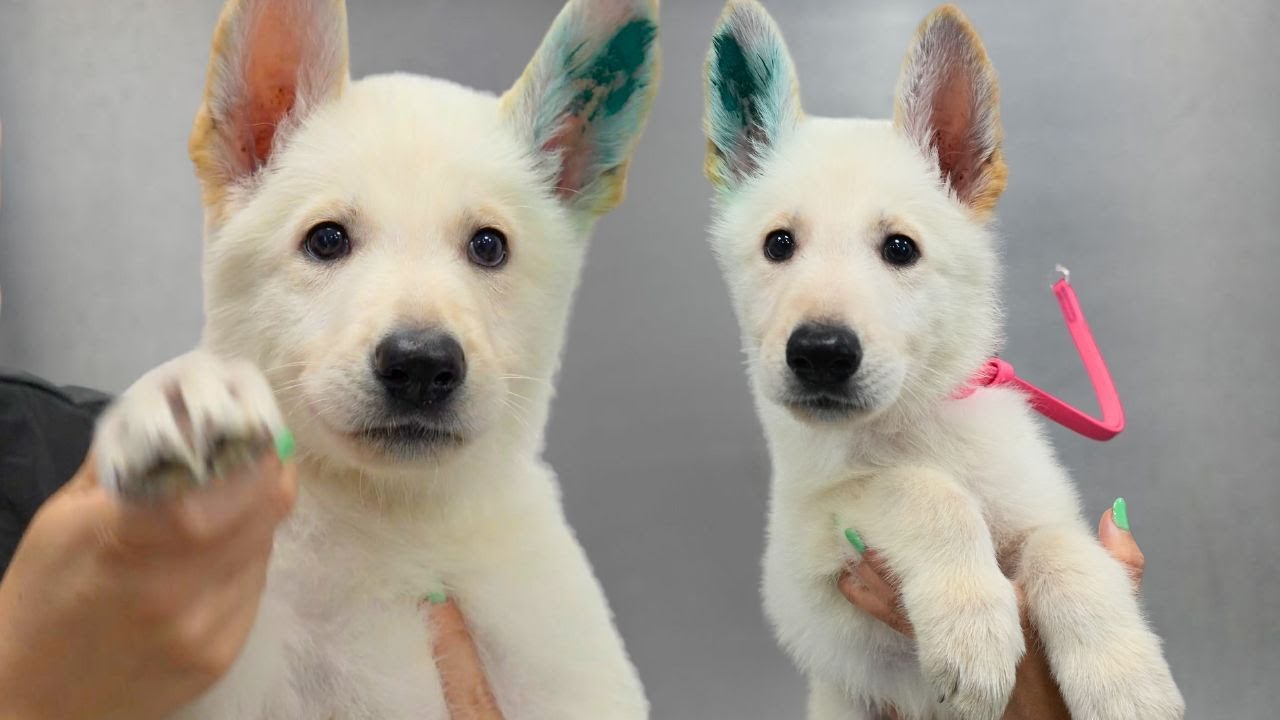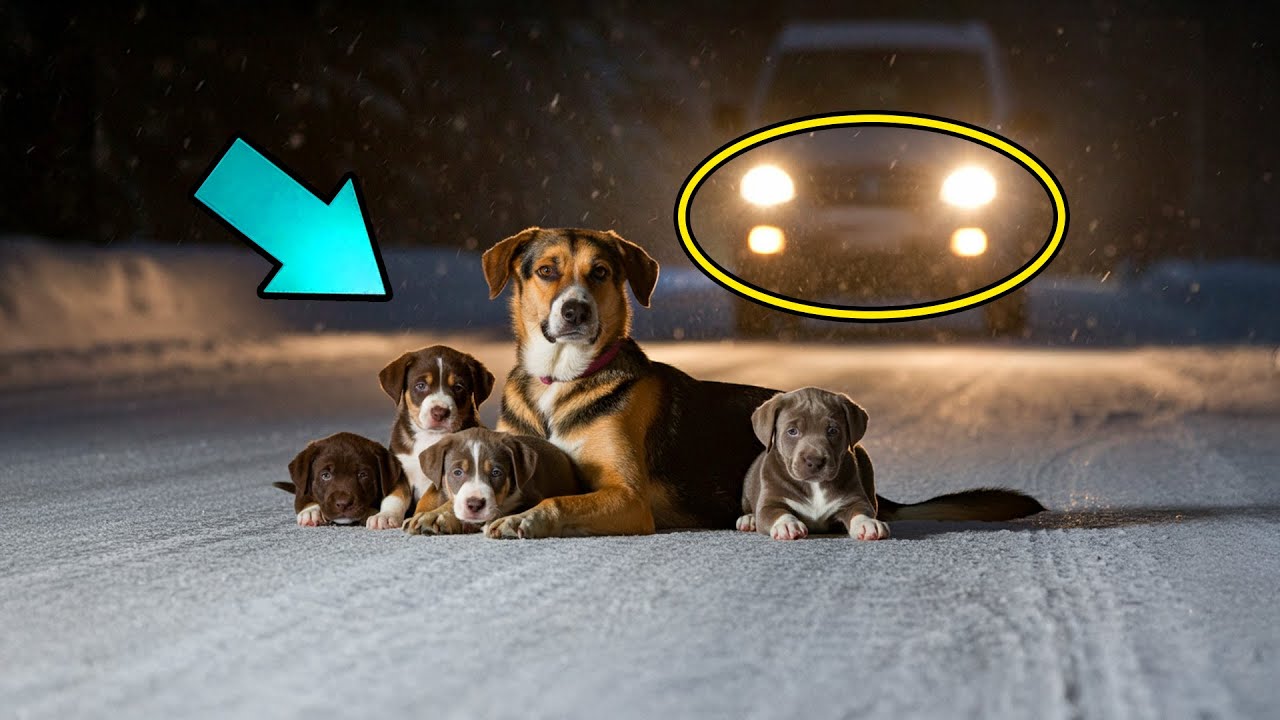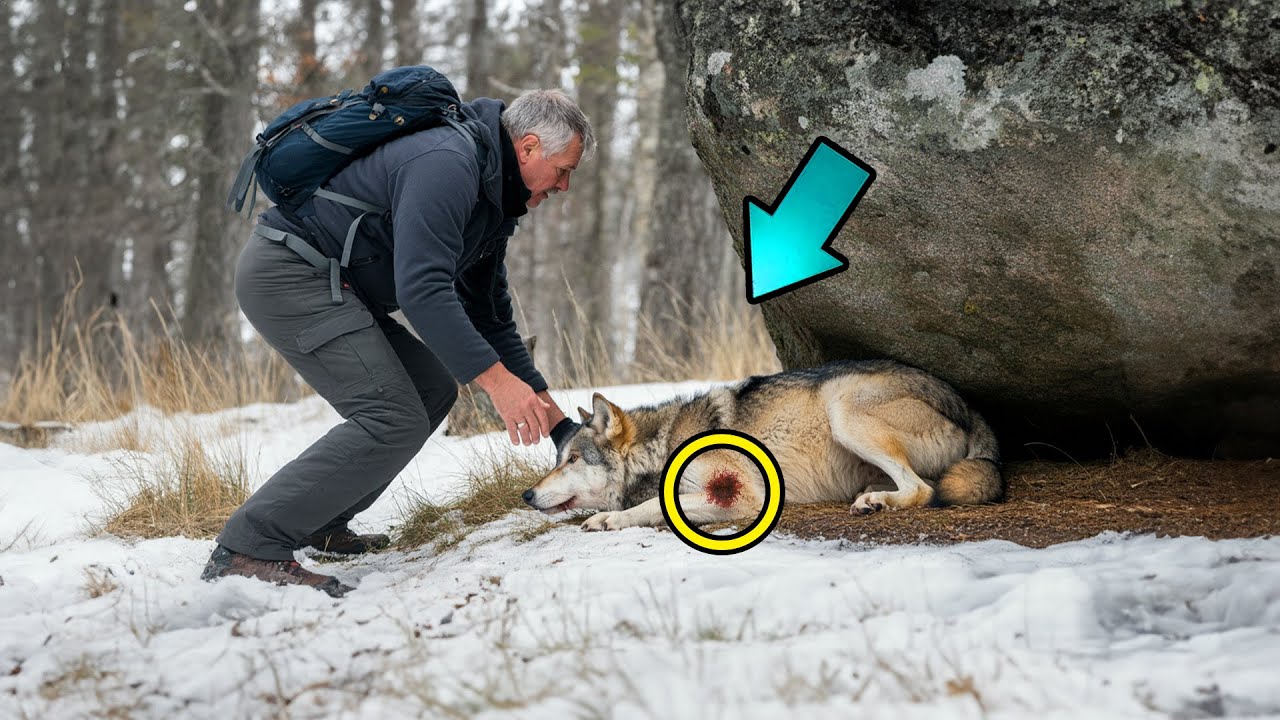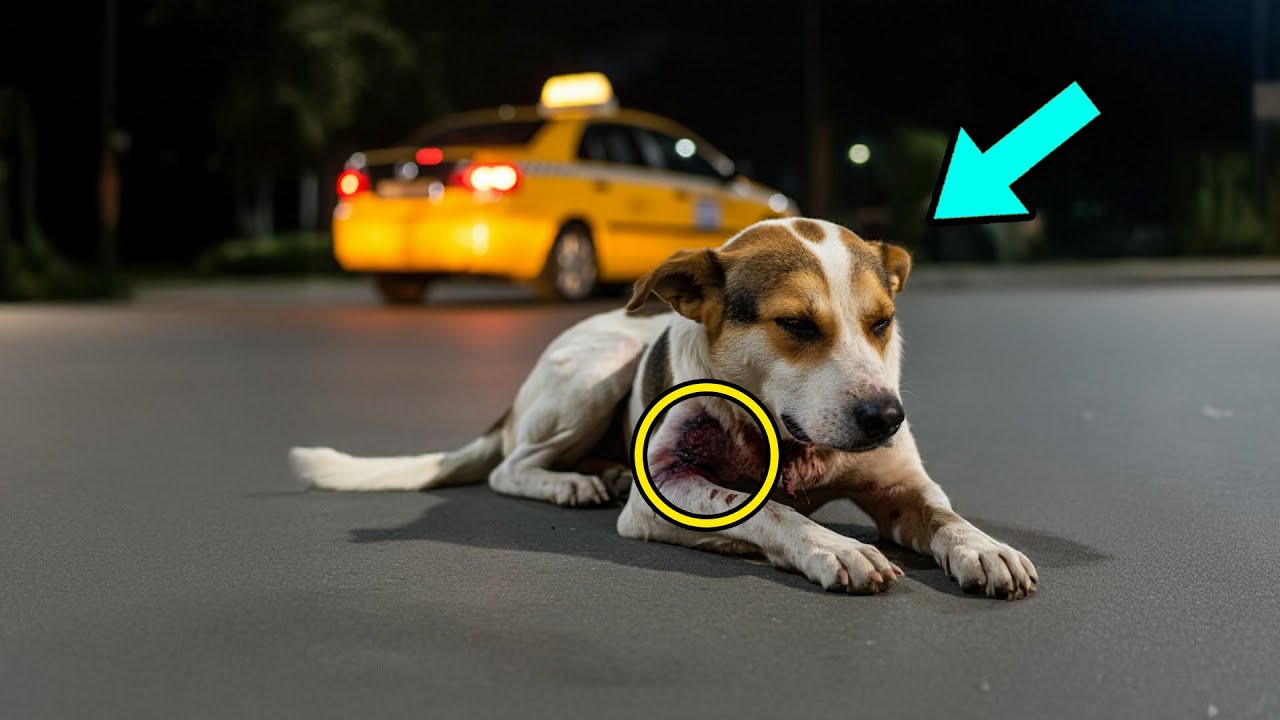A tiny bird with a black mask whereas the females have a small black ear patch on an overall pale face.
Meet the Masked Gnatcatcher
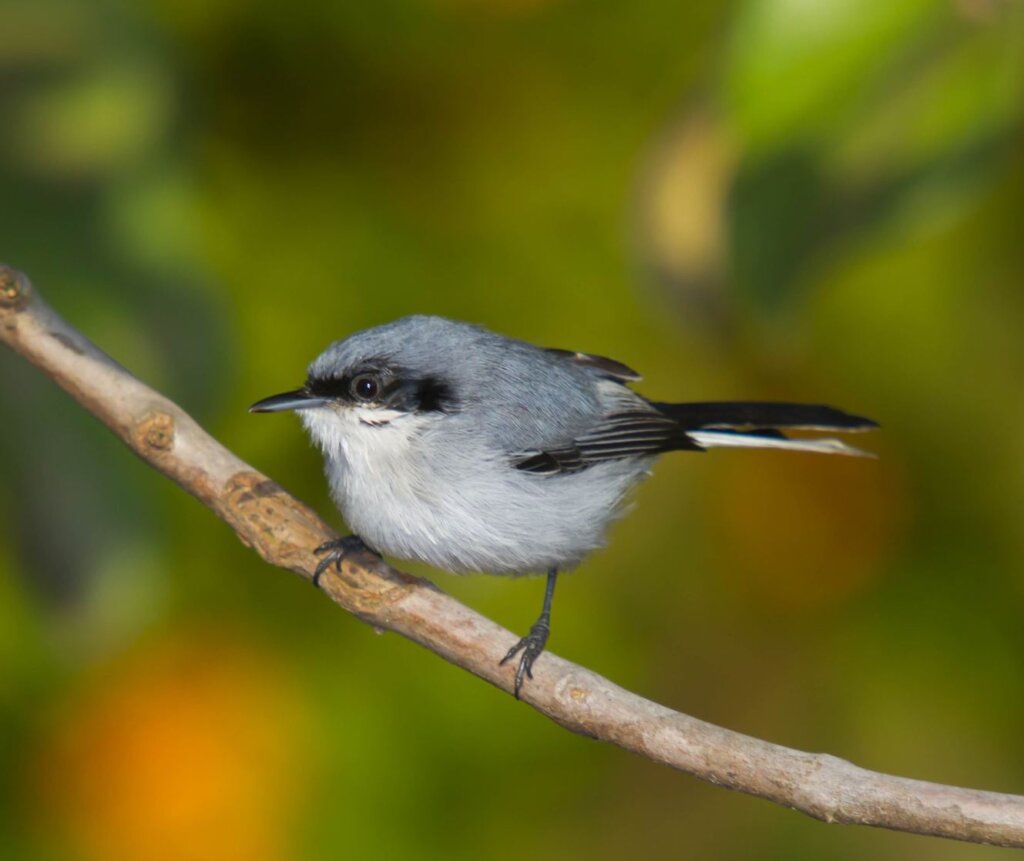
Photo (frame reduced) Courtesy of Wagner Machado Carlos Le/CC BY 2.0
The masked gnatcatcher (Polioptila dumicola) is a small, though highly active, South American songbird. However, it is the largest species of its genus Polioptila. The male has a blue-grey forehead, crown, nape, and upper parts. The flight feathers on his wings are blackish with secondary feathers being edged in white. His tail is black with the outer feathersrs being white. He also sports a rather conspicuous black mask that runs from the base of his mandible, through the eyes, and back to the year coverts. There is also a thin white strike ordering the lower edge of his mask. His bill legs and feet are black, is eyes are dark brown.
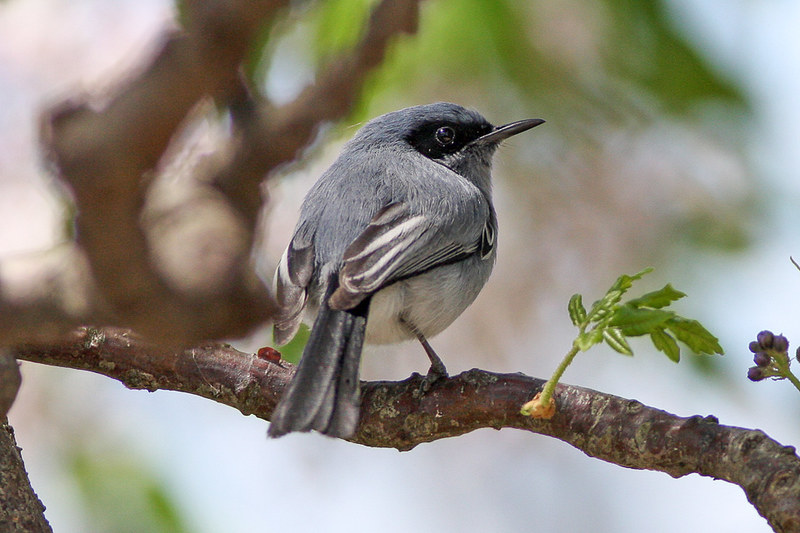
Photo Courtesy of Ron Knight/CC BY 2.0
The adult female looks very similar to the male though she does lack the black mask he wears. Instead, she has a black border that runs from behind the eye to the rear of the white ear-coverts.
She so also has a white ring that surrounds her eyes.
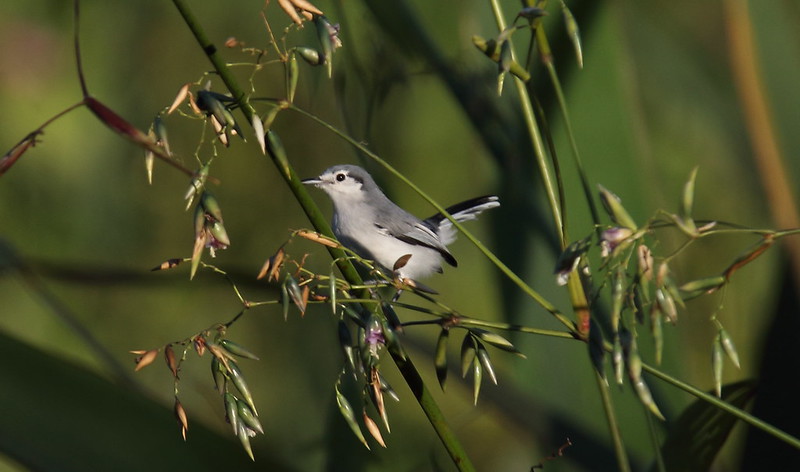
This bird is found in Argentina, Bolivia, Brazil, Paraguay, and Uruguay.
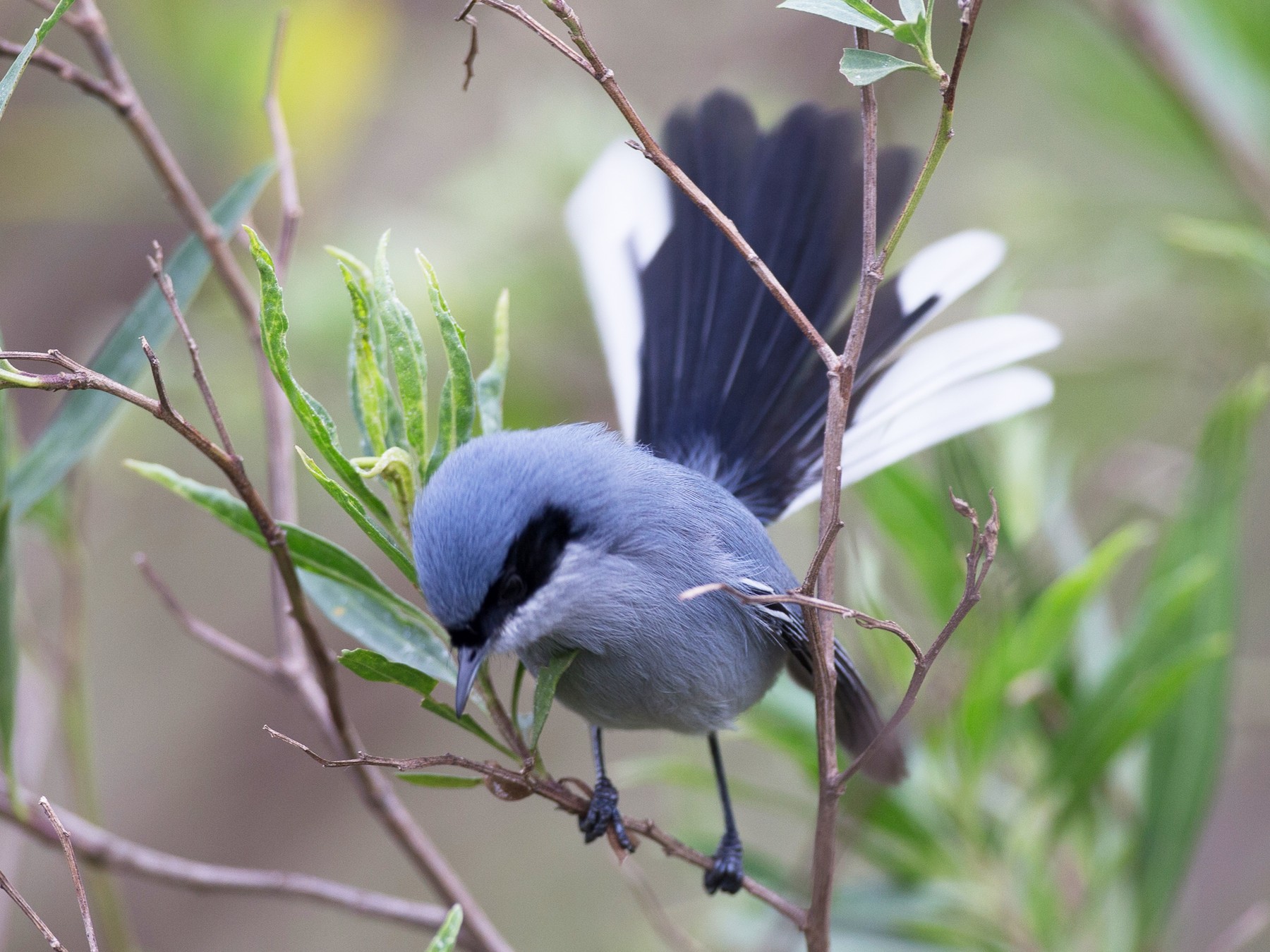
The Masked Gnatcatcher prefers to live in several types of habitats such as dry arid habitats with thorny bushes and cacti, wooded areas with savannas, and vast tropical savanna.
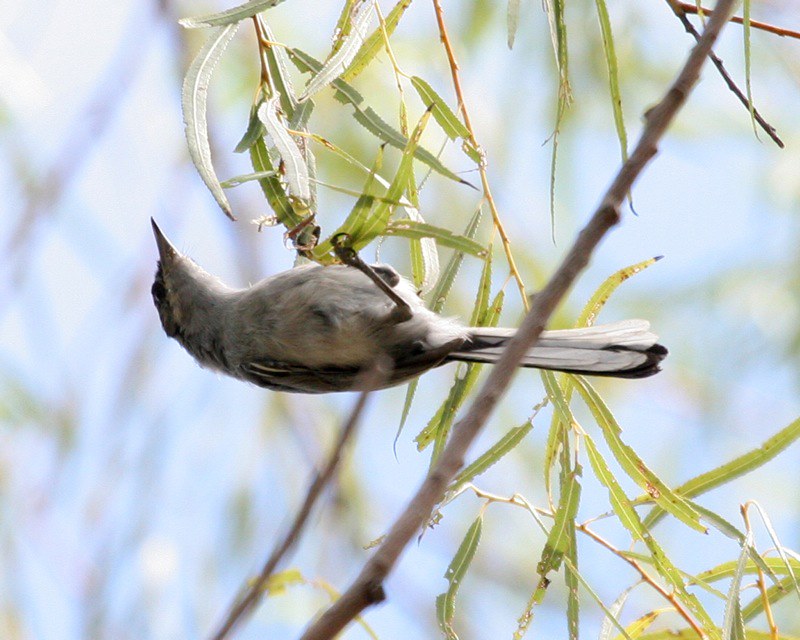
Photo Courtesy of Lip Kee/CC BY-SA 2.0
The Masked Gnatcatcher feeds on insects and spiders by flitting through the tree canopy. It regularly hops from branch to branch while foraging amongst the foliage.
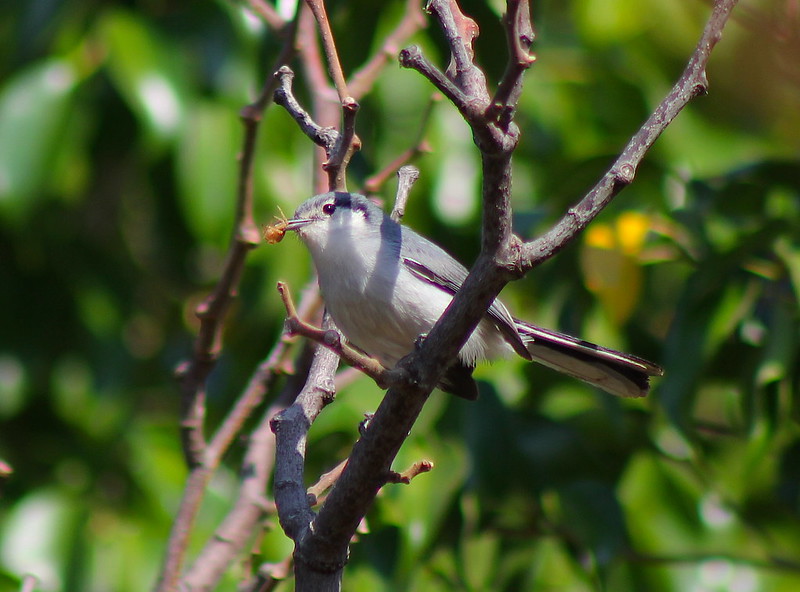
Photo Courtesy of Under the same moon…/CC BY 2.0
The Masked gnatcatcher’s breeding season goes from September through to January. It builds a small cup-shaped nest made from plant fibers cemented together with spider silk and camouflaged by lichens stuck to the outer surface. A clutch of three to five eggs is laid with and incubated by both 𝓈ℯ𝓍es. Both 𝓈ℯ𝓍es will also feed young when they hatch and become fledged after 14-15 days.
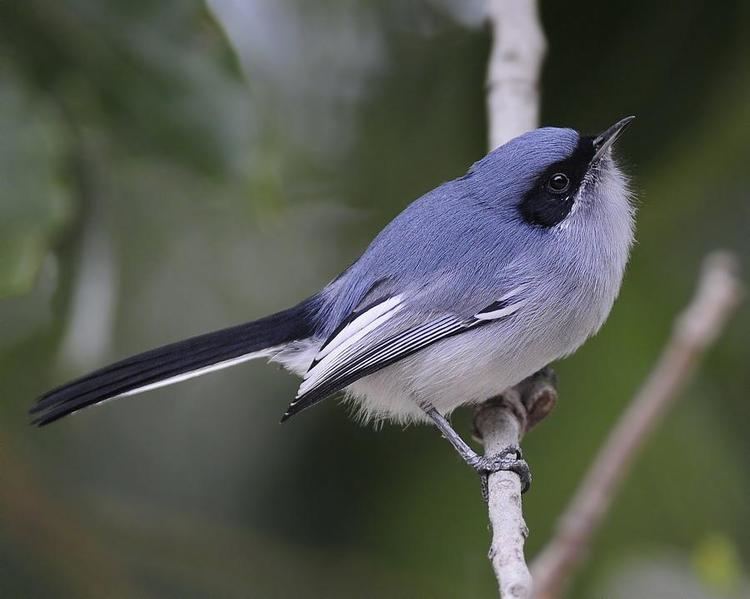
The IUCN has assessed the masked gnatcatcher overall as being of Least Concern. The nominate and berlepschi appear not to be seriously threatened but saturata ” is considered to be at serious risk due to human settlement and agricultural conversion.”
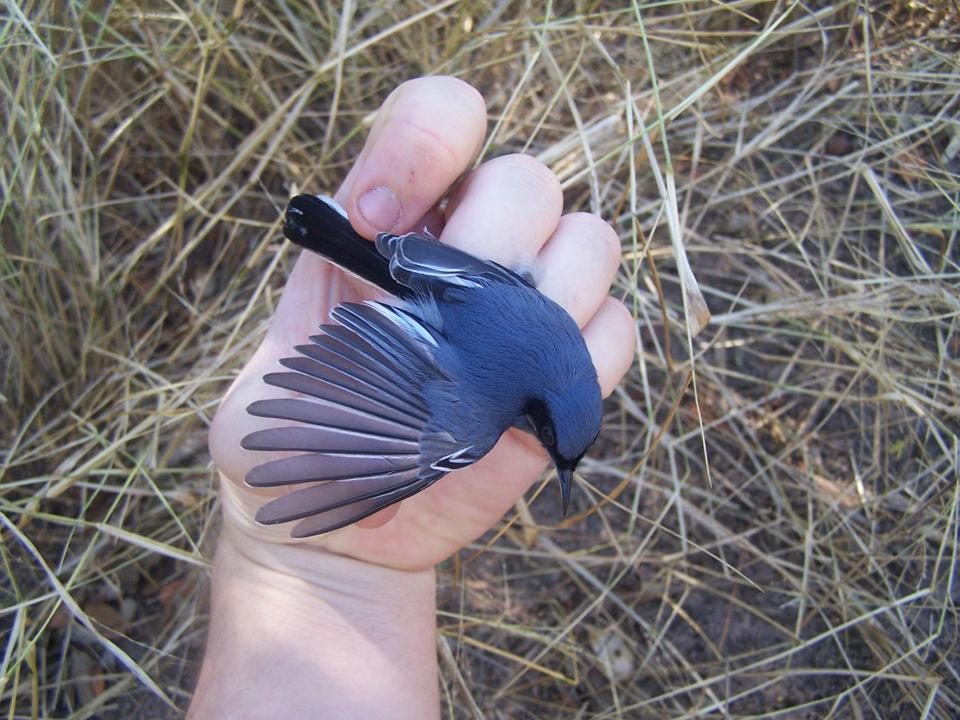
You can watch this bird right here in the video below:
